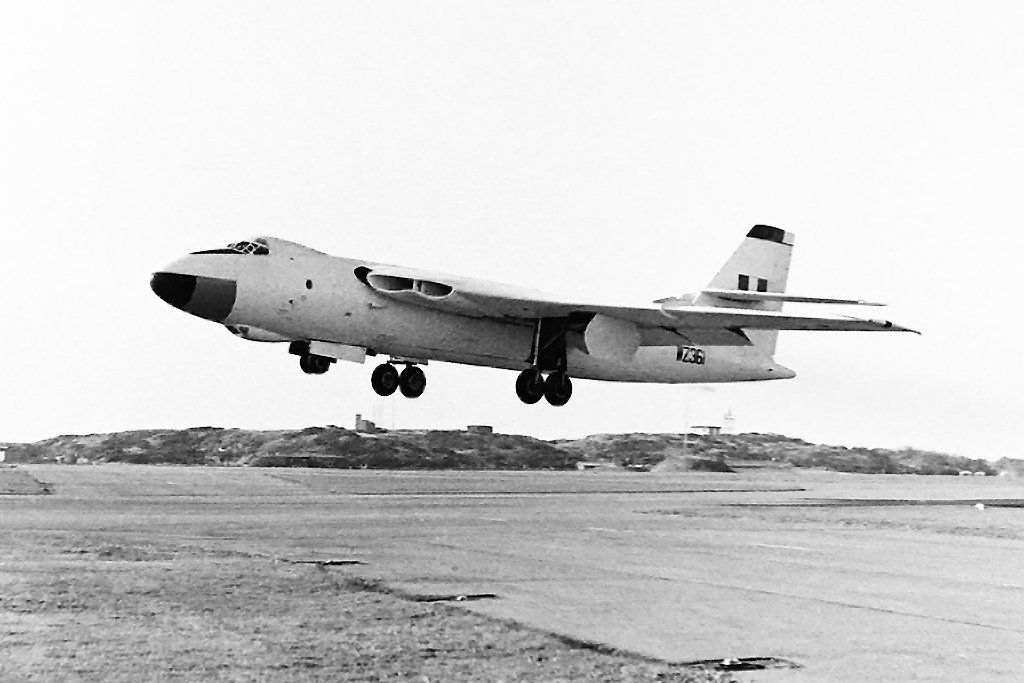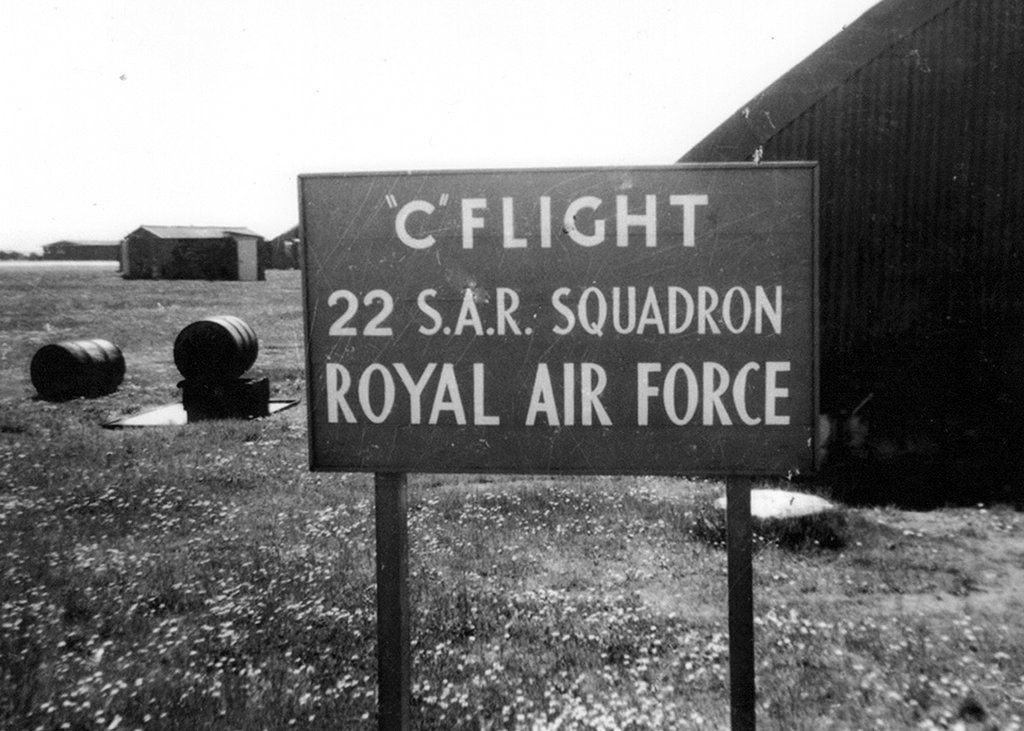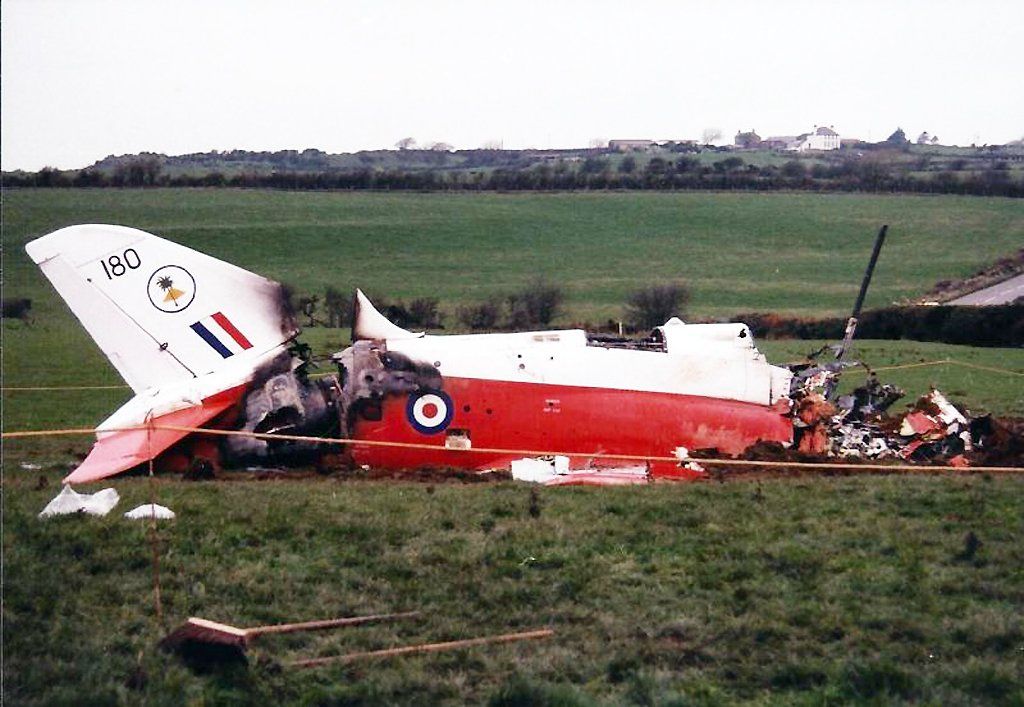THE EARLY POST WAR YEARS AT RAF VALLEY
THE EARLY POST WAR YEARS AT RAF VALLEY

With the war finally over in Europe and the Pacific, literally scores of RAF establishments were all facing an uncertain future, including RAF Valley.
However, there was some activity to continue with the various remaining RAF units conducting night flying exercises, together with the occasional weather diversion. On 28 July, 1946 the station was transferred to Flying Training Command on a care and maintenance basis and by 1947 was officially designated as a Master Diversion Airfield.
On 29 April, 1947 RAF Valley was to first experience the sound of jet engines, when three Vampire F Mk 1s arrived as a temporary detachment of No 595 Squadron from RAF Pembrey to provide high speed targets for Royal Artillery trainee anti-aircraft gunners at nearby Ty Croes. This was soon replaced by a similar detachment from No 631 Squadron (coded DF), from RAF LLanbedr, equipped with a pair of Beaufighter TT Mk 10s, a Martinet and a Harvard, together with Spitfire LF 16s and Vampire F Mk 1s and would continue the targeting task. In addition, on 6 August an element of No 21 RFU at RAF Moreton Valence moved in as No 2 (Pilots) Refresher Flying Unit equipped with Oxford Mk 1s and Harvard 11Bs.
No 12 Group, Fighter Command was to then take over the airfield in April 1948, while in the same month the Mountain Rescue Unit arrived due to the closure of RAF LLandwrog. In the meantime, No 2 RFU was to move out to be absorbed by No 1 RFU at RAF Finningley.
On 11 February 1949, No 631 Squadron was to be disbanded at RAF Llanbedr, together with its detachment at Valley; as the squadron was to be resurrected at RAF Jever, West Germany as No 20 Squadron. (595 Sqn would also be disbanded at RAF Pembrey on the same day and would eventually become No 5 Sqn).
On August 12, 1950 a single USAF B-50A Superfortress from the 97th Bombardment Group arrived at the station from Biggs AFB, Texas; followed the next day by another nine of the heavy bombers, plus an additional three on the following day. By August 25, mobile GCA radar had been installed by the Americans, who would remain at Valley for two months before departing for RAF Oakington and eventually RAF Lakenheath. And then on 29 December, 1950 no less than 13 B-50s were weather diverted and were to remain until New Year’s Day. Regular USAF visitors throughout the fifties until 1958, was to be the 53rd Weather Reconnaissance Squadron WB-50Ds based at RAF Burtonwood, which was tasked in collecting Atlantic weather data.
It then appeared that the station’s future was to become even more secure when in February 1951 HRH King George VI was to grant RAF Valley its official crest. This would include a Welsh dragon clutching a portcullis and inscription ´In Adversis Perfugium`, which translates as `Refuge in Adversity,` reflecting the station’s weather diversion tasks. Further consolidation was to follow, when Flying Training Command took over on 1 April 1951 and announced that the station was to be one of its principle airfields.
During the previous month, No 202 Advanced Flying School arrived. Tasked with refresher training courses for jet operations and equipped with Vampire FB 5s, T Mk 11s and a single Vampire F Mk 1, together with a Station Flight comprising an Oxford, Chipmunk and Anson. By 7 April, 1951 the first pilots had all soloed and were to graduate on April 29.
In May 1954, C Flight, No 22 Squadron arrived with Sycamore HC 14s, before being replaced by the Whirlwind HAR Mk 2 in January 1956. During this period, commencing in 1952, development testing of air to air missiles was also proceeding, using Swifts and later Javelins. (Check out details at ´Missiles Galore`)
However, due to various structural changes within Flying Training Command, on 1 July 1954 No 202 AFS was re-designated as No 7 Flying Training School and was also tasked in training Fleet Air Arm pilots to fly jets. The programme would comprise a 28 week course using the single seat Vampire and a few Meteor T Mk 7s, which were progressively exchanged for twin seat Vampire T Mk 11s.
In the meantime, regular weather diversions were being received at the station, which would be operational for 24 hours a day, seven days a week. As an example, in December 1958 the station logged 11 Canberras, 4 Hunters, 3 Varsities, 7 Valiants and a Canadian T-33 Silver Star.
On 15 August, 1960 the school was renumbered as No 4 Flying School and would take on the added task of training multi engine students for Transport and Coastal Command using the Varsity T Mk 1, until March 1962 when that responsibility was moved to RAF Oakington.
The station then went on to receive the Gnat T Mk 1, with the first example XP 502 arriving on 7 November 1962, which is another story!
Photos provided by Neville Evans, Ken Richards, Allan Sharp, Dennis Pritchard, an unknown source and MOD.
































